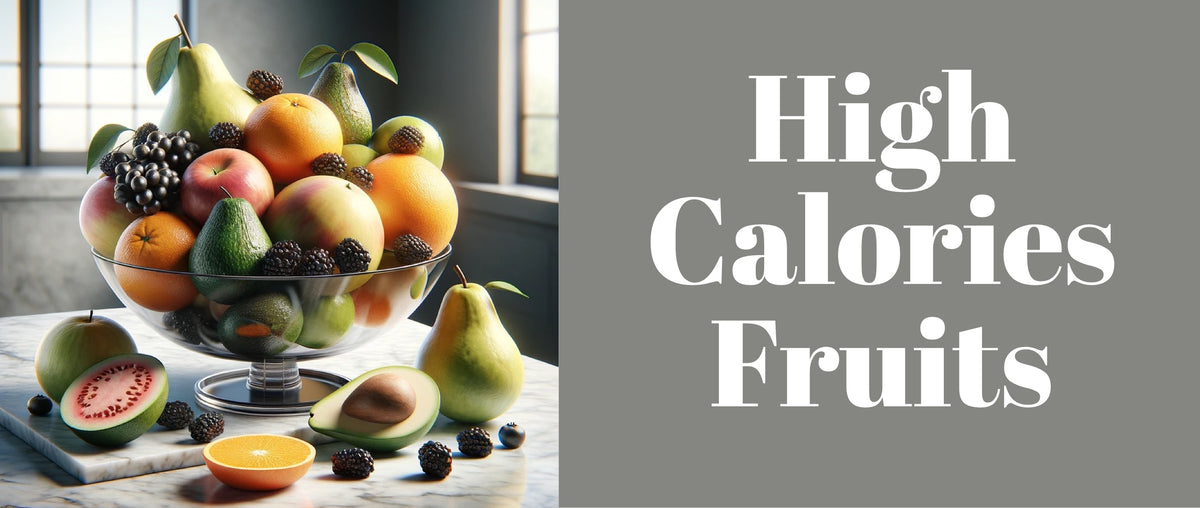Water Conservation and Plant Based Eating
Water conservation is a crucial topic in today's world, especially with the increasing challenges of climate change and population growth. One significant way individuals can contribute to water conservation is by adopting a plant-based diet. This article explores the connection between plant-based eating and water conservation, providing insights into how dietary choices can significantly impact our water footprint. By making informed choices, we can ensure that we have adequate water supplies for future generations while also promoting healthy eating and sustainability.
Key Takeaways
- Adopting a plant based diet can significantly reduce your water footprint.
- Plant-based foods require less water to produce compared to animal-based foods.
- Shifting to a plant based diet promotes environmental sustainability and resource conservation.
- Incorporating healthy snacks for kids and high protein snacks into your diet can support water conservation efforts.
- Understanding the concept of a water footprint is essential for making informed dietary choices.
What Is a Water Footprint?
A water footprint is a measure of the amount of water used to produce the goods and services we consume. It includes water used in agriculture, industry, and domestic activities. Understanding our water footprint helps us recognize the impact of our consumption habits on global water resources.
- Definition: The water footprint is categorized into three types: blue water (surface and groundwater), green water (rainwater), and grey water (water needed to dilute pollutants).
- Measurement: Water footprint is measured in terms of volume (liters or gallons) of water consumed per unit of product.
- Importance: Knowing our water footprint helps in making sustainable choices, such as opting for low calorie food and plant based foods, which have a lower water footprint compared to meat and dairy products.

Understanding Water Usage in Food Production
Food production is one of the most significant contributors to our water footprint. The water required to produce different types of food varies greatly, with plant-based foods generally requiring less water compared to animal-based foods.
- Statistics: On average, producing 1 kilogram of beef requires about 15,000 liters of water, while producing 1 kilogram of vegetables requires only 322 liters.
- Comparison: The production of Vegan Cheese, for example, uses significantly less water than traditional dairy cheese. Similarly, High Protein Vegan Food made from plant based sources are more water-efficient than those derived from animal sources.
- Case Studies: A study comparing the water footprints of different diets found that a plant based diet could reduce water usage by up to 55% compared to a meat-based diet.
How Plant Based Eating Impacts Your Water Footprint
Adopting a plant based diet can lead to substantial water savings, contributing to overall water conservation efforts.
- Reduction in Water Usage: Plant based foods like fruits, vegetables, grains, and legumes require less water to produce than meat and dairy products. By choosing these foods, we can significantly reduce our water footprint.
- Environmental Benefits: Lower water usage in agriculture reduces the strain on freshwater resources and helps maintain healthy ecosystems. This shift also supports soil health and biodiversity.
- Health Benefits: In addition to environmental benefits, a plant based diet can promote healthy eating, weight management, and disease prevention. It is rich in nutrients and can support overall well-being.
Plant-Based Foods: How They Promote Water Conservation
Certain plant based foods are particularly beneficial for water conservation due to their low water requirements.
- Water-Efficient Foods: Foods like lentils, chickpeas, and quinoa are excellent examples of water-efficient crops. They require minimal water and offer high nutritional value.
- Impact on Global Water Resources: By incorporating more low calorie food and high protein snacks from plant sources into our diets, we can collectively reduce the global water footprint.
- Success Stories: Numerous communities and individuals have successfully adopted plant based diets and have seen positive impacts on local water resources. These success stories highlight the potential for widespread change.
Animal Waste and Its Impact on Water Resources
Animal agriculture not only consumes significant amounts of water but also produces substantial waste that can contaminate water supplies.
- Overview of Animal Waste Production: Livestock produce large quantities of waste, including manure and urine, which can seep into waterways and pollute drinking water sources.
- Effects on Water Quality: Runoff from animal farms can lead to nutrient pollution, causing issues like algal blooms and dead zones in water bodies. This pollution makes water treatment more challenging and costly.
- Comparison with Plant-Based Agriculture: Plant based agriculture generally produces less waste and has a lower environmental impact compared to animal agriculture. By reducing our reliance on animal products, we can help protect water quality.
How to Adopt a Plant Based Diet
Transitioning to a plant based diet can be simple and enjoyable with the right approach. Here are some practical tips to help you get started:
Practical Tips for Transitioning
- Start Gradually: Begin by incorporating more plant based meals into your diet a few times a week. Gradually increase the number of plant based days as you become more comfortable.
- Focus on Whole Foods: Emphasize whole grains, fruits, vegetables, legumes, nuts, and seeds. These foods are nutrient-dense and have a lower water footprint.
- Plan Your Meals: Create a meal plan that includes a variety of plant based foods to ensure you get all the necessary nutrients. Websites like Grabenord's Healthy Plant-Based Recipes for Kids offer great recipe ideas.
- Experiment with New Recipes: Try new recipes and cooking methods to keep your meals exciting. You can find inspiration on Grabenord's blog.
Easy Swaps and Substitutions
- Dairy Alternatives: Replace dairy milk with plant based milks such as almond, soy, or oat milk. Use Vegan Cheese instead of regular cheese in your dishes.
- Protein Sources: Substitute meat with high-protein plant-based options like lentils, chickpeas, tofu, and tempeh. Check out Grabenord's High Protein Vegan Foods for more ideas.
- Snacks: Option for Healthy Snacks for Kids like nuts, seeds, fruit, and high protein snacks like hummus and veggies. Visit Grabenord's Healthy Snacks for Kids for kid-friendly options.
Meal Planning for Water Conservation
- Batch Cooking: Prepare meals in bulk to save time and reduce food waste. Store them in reusable containers for easy access throughout the week.
- Seasonal and Local Foods: Choose seasonal and locally-grown produce to reduce your environmental impact. Seasonal foods are fresher, more nutritious, and often require less water to grow.
- Balanced Diet: Ensure your diet is balanced with a variety of food groups to meet your nutritional needs. Refer to Grabenord's guide for tips on maintaining a balanced plant based diet.
Addressing Common Concerns
Transitioning to a plant based diet can bring up several concerns, ranging from nutritional adequacy to cost and social factors. Here, we address some of the most common concerns and provide practical solutions.
Nutritional Considerations
- Protein Intake: Many people worry about getting enough protein on a plant based diet. However, there are plenty of high protein snacks and meals that can meet your needs, such as lentils, chickpeas, tofu, tempeh, and vegan cheese.
- Vitamin B12: This vitamin is not naturally found in plant foods, so it's important to consume fortified foods or take a supplement. Nutritional yeast, fortified plant milks, and some breakfast cereals can provide this essential nutrient.
- Iron: Plant based sources of iron include beans, lentils, spinach, and quinoa. Pairing these foods with vitamin C-rich foods like citrus fruits can enhance iron absorption.
- Calcium: Leafy green vegetables, fortified plant milks, and tofu are excellent sources of calcium.
Cost Implications
- Affordable Options: Contrary to popular belief, plant based diets can be cost-effective. Foods like beans, lentils, rice, and seasonal vegetables are generally affordable and nutritious.
- Budget Planning: Planning meals and buying in bulk can help keep costs down. Look for local farmer's markets or discount stores for fresh produce and pantry staples.
- Home Cooking: Preparing meals at home is often cheaper and healthier than eating out. Websites like Grabenord's Simple Plant-Based Meals for Busy Weeknights offer easy and budget-friendly recipes.
Social and Cultural Factors
- Social Events: Navigating social gatherings can be challenging, but bringing a plant based dish to share can ensure you have something to eat and introduce others to delicious plant based foods.
- Cultural Cuisine: Many traditional cuisines are rich in plant based dishes. Explore recipes from different cultures to diversify your diet and enjoy new flavors.
- Family Meals: Involve your family in meal planning and cooking. This can be a fun way to educate them about the benefits of plant based eating and discover new favorite meals together.
Conclusion
Adopting a plant based diet is a powerful way to contribute to water conservation, promote healthy eating, and support environmental sustainability. By making informed choices and incorporating more plant based foods into your diet, you can significantly reduce your water footprint and enjoy numerous health benefits.
The journey to a plant based diet doesn't have to be daunting. Start gradually, experiment with new recipes, and enjoy the process of discovering delicious and sustainable foods. With the right approach, you can make a positive impact on the planet while nourishing your body.
Do you enjoy vegan food? We have a list of vegan restaurants in India to help you find delicious options in your area!










